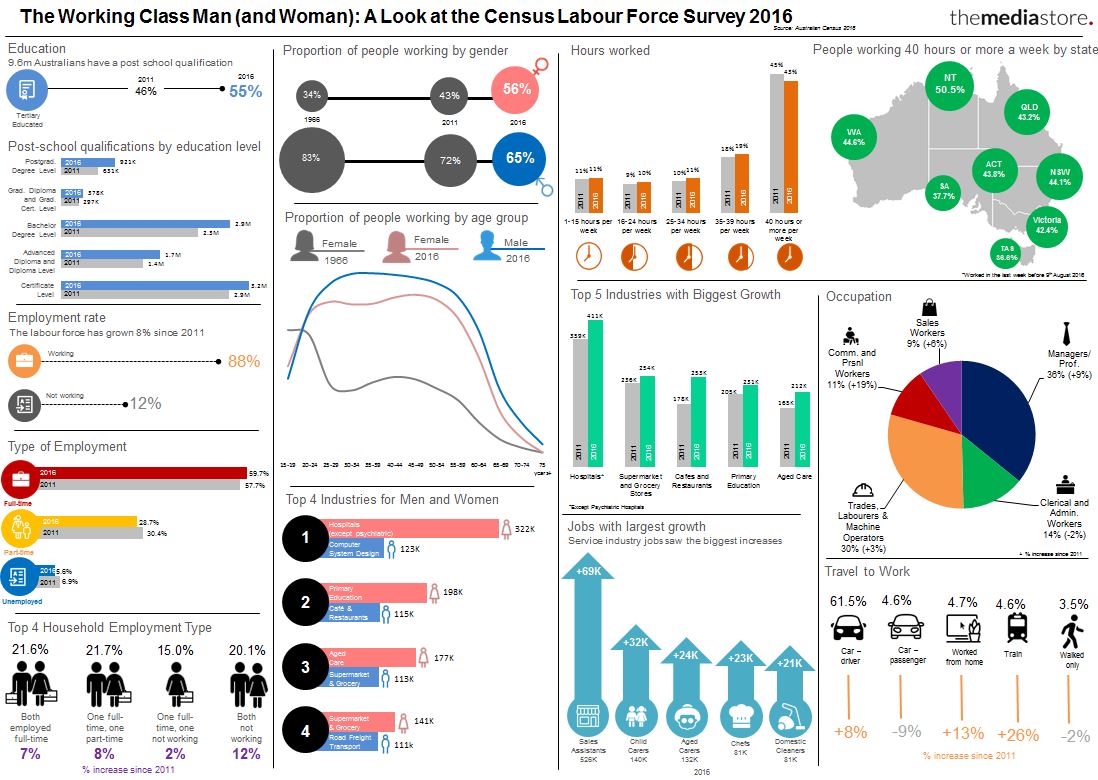On the 17th of October, the second instalment of the Census data was released (see the first instalment here). The Labour Force Survey looked at employment, qualifications and population mobility. The data revealed more females working than ever before with 56% participating in the labour force, compared to only 34% in 1966. It also reveals less households with one, sole breadwinner. There’s been an increase of couples both working full-time or one full-time and one part-time in order to support the family unit.
Here are 13 Ways Australia and the labour force has changed:
- Australia is more educated then ever with 55% of Australians having a post school qualification – most people hold a certificate level qualification, followed by a bachelor degree.
- The labour force has grown by 8% since 2011 and see 88% of people participating in it.
- There has been an increase in full-time employment with unemployment being the lowest in 4 years.
- The household structure has changed with more couples both working full-time or one full-time and one part-time.
- There are more females than ever before working. In 1966 only 34% of women worked, compared to 2016 where over half are playing their part in the labour force.
- The gap between males and females working by age is narrowing – in 1966 women were working in their teens before their childbearing years, before becoming a housewife
- The top industries for women are hospitals, primary education and aged care, all increasing significantly since 2011.
- People working 40 hours or more a week has decreased.
- The hospital industry saw the biggest growth, followed by supermarkets and grocery stores.
- Service industry jobs saw the biggest increase since 2011.
- The 2 largest occupation sectors, managers and professionals increased by 9% and trades and related industries increased by only 3%.
- More people are travelling to work by train with a 26% increase.
- More people are working from home, with women being 57% more likely to work remotely.
